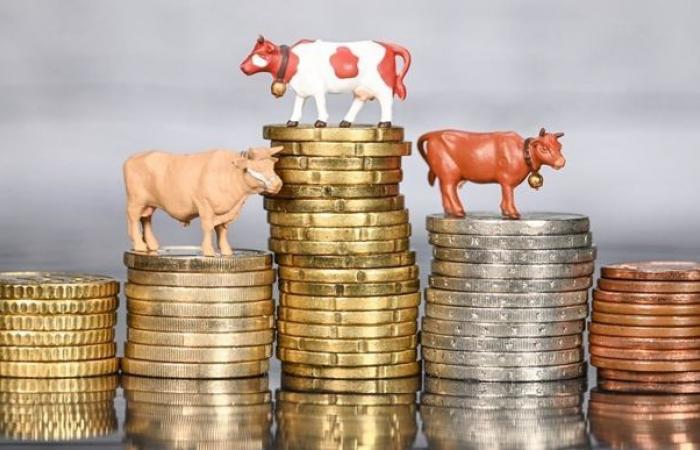Consequence of the rise in meat pricesthe value of animal stocks increased on farms. In two years, the balance sheet value of a dairy cow has increased by around €500. The impact can be transposed to the suckling herd.
On the structures monitored by Cerfrance Bretagne, count €1,733 for a dairy cow recorded in stock in 2021, compared to €2,221 in 2023. “The cow value went from €1,088 to €1,484, the rest of the increase corresponds to the increase in the value of the suite,” explains Mélanie Gautier, study manager at Cerfrance Bretagne.
Rising balance sheet values
At the herd level, the numbers are rising quickly. On a structure of 100 dairy cows, the increase in the price of meat leads to an increase in stock value of €50,000. An increase in value which contributes to increasing, in a more or less artificial manner, the operating results. “Inventories push the balance sheet upwards, but that does not necessarily translate into cash available for the farmer,” continues Mélanie Gautier.
However, this means that the cows have more resale value. “We must see it as a long-term investmentespecially since nothing portends significant drops in meat prices in the long term,” believes the advisor.
A tax exemption of €150 per cow
To cushion this sudden variation in the value of stocks, a temporary system was put in place by the former Minister of the Economy, Bruno Lemaire. A provision of €150 per cow is granted for financial years ending between January 1, 2023, and December 31, 2024. Farms showing an increase in the value of stocks of 10% are eligible (excluding increase in the size of the herd), within the limit of €15,000 per operation, or per partner in EARL and GAEC (within a limit of four partners).
In short, on our fictitious farm of 100 dairy cows, the tax deduction makes it possible to reduce the structure’s profit by €15,000, thus mitigating the increase in the value of the stock from €50,000 to €35,000.
Take into account the value of the livestock during takeovers
Beyond the impact on farm balance sheets, the rise in the cost of meat weighs on farm transfers. Still on our structure of 100 dairy cows, €50,000 increase in stock value means €50,000 more for the buyer!
“Before the price increase, the price of cows was negotiated at a fixed price,” explains Mélanie Laurent, installation advisor at CER France Finistère. “Today, some sellers prefer to value them at the daily rate.”
Financing solutions exist for the recovery of livestock, especially as it takes place in a context that is rather favorable to animal production. Here are several options:
- Increase the short term loans. “It is always possible to increase the overall envelope, with long-term financing, but I think it is a mistake to finance livestock in the long term,” believes Mélanie Laurent. With a 10-year loan, “the cow will have already gone to the slaughterhouse a long time ago even though we have not yet finished paying for it”.
- Set up seller credits. These loans, potentially family ones, constitute debt, but with more flexibility. “We can imagine zero-interest loans, with flexibility on repayment deadlines,” specifies the advisor. Still little practiced a few years ago, this type of practice is now attracting more and more interest from farmers.
- Spread out the recovery. Separate the recovery of land from that of livestock (deferred purchase, portage system for land, etc.) in order to have availability for the recovery of livestock.
- The honorary loan Brit Agricultural. “We are here with a typically Breton solution, but equivalent systems perhaps exist in other regions” smiles Mélanie. The Brit loan allows you to obtain from €20,000 to €50,000 over a period of 5 years, with the possibility of deferring repayment from 1 to 3 years.
Also be careful not to lower the value of stocks for transmission too much. “If the price is still as high on the first balance sheet, the increase in the value of stocks will come back like a boomerang on the first balance sheet,” adds Mélanie Gautier.
Finally, the advisor insists, “the increase in the value of animals can be a barrier to installation”. The main thing remains to work with a transferor who is willing to settle a young person. And to do this, “only the economic value counts”, says Mélanie Laurent. “We know that someone who buys too much will have difficulty in the long term,” confirms his colleague from the Brittany region.






